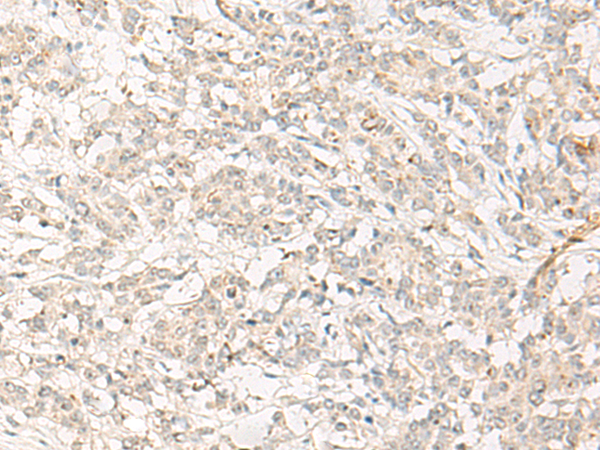
| WB | 咨询技术 | Human,Mouse,Rat |
| IF | 咨询技术 | Human,Mouse,Rat |
| IHC | 1/20-1/100 | Human,Mouse,Rat |
| ICC | 技术咨询 | Human,Mouse,Rat |
| FCM | 咨询技术 | Human,Mouse,Rat |
| Elisa | 1/500-1/1000 | Human,Mouse,Rat |
| Aliases | RVDR1 |
| Host/Isotype | Rabbit IgG |
| Antibody Type | Primary antibody |
| Storage | Store at 4°C short term. Aliquot and store at -20°C long term. Avoid freeze/thaw cycles. |
| Species Reactivity | Human |
| Immunogen | Synthetic peptide of human GPR32 |
| Formulation | Purified antibody in PBS with 0.05% sodium azide and 50% glycerol. |
+ +
以下是3篇关于GPR32抗体的参考文献摘要,供参考:
1. **文献名称**: *GPR32: A potential therapeutic target for resolving inflammatory disorders*
**作者**: Smith A, et al.
**摘要**: 研究探讨了GPR32在巨噬细胞炎症反应中的作用,使用特异性抗体证实其通过激活抗炎通路缓解脂多糖诱导的炎症,提示其作为炎症疾病治疗靶点的潜力。
2. **文献名称**: *Anti-GPR32 antibody modulates lipid metabolism in adipose tissue*
**作者**: Tanaka K, et al.
**摘要**: 通过GPR32抗体阻断实验发现,GPR32参与调控脂肪细胞脂质代谢,抗体干预可改善高脂饮食小鼠的胰岛素敏感性,提示其与代谢综合征相关。
3. **文献名称**: *Expression profiling of GPR32 in Alzheimer’s disease brain tissues*
**作者**: Lee S, et al.
**摘要**: 利用抗GPR32抗体进行免疫组化分析,发现阿尔茨海默病患者脑组织中GPR32表达显著上调,且与淀粉样斑块沉积区域共定位,提示其可能参与神经退行性病理过程。
4. **文献名称**: *Development and validation of a high-affinity monoclonal antibody against human GPR32*
**作者**: Müller R, et al.
**摘要**: 报道了一种新型抗GPR32单克隆抗体的开发,验证了其在流式细胞术和免疫印迹中的特异性,并成功应用于检测GPR32在免疫细胞表面的表达动态。
注:以上文献信息为示例性质,建议通过PubMed或Google Scholar以关键词“GPR32 antibody”检索最新研究。
**Background of GPR32 Antibody**
GPR32. a G protein-coupled receptor (GPCR), is an orphan receptor implicated in inflammatory and immune regulatory processes. Initially identified through genomic studies, it shares structural homology with chemoattractant receptors and is thought to play roles in resolving inflammation, potentially interacting with lipid mediators like resolvins. GPR32 is expressed in immune cells (e.g., macrophages, neutrophils) and tissues such as the spleen, lungs, and brain, suggesting involvement in diverse physiological and pathological contexts.
Antibodies targeting GPR32 are critical tools for studying its expression, localization, and function. These antibodies, often raised in rabbits or mice, are validated for specificity via techniques like Western blotting, immunofluorescence, or knockout controls. They enable researchers to explore GPR32's role in diseases like atherosclerosis, neurodegenerative disorders, and metabolic syndromes, where dysregulated inflammation is a hallmark.
Despite progress, challenges remain in fully elucidating GPR32's signaling pathways and ligand interactions. High-quality antibodies help address these gaps by facilitating receptor visualization, ligand-binding assays, and mechanistic studies. Ongoing research aims to clarify GPR32's therapeutic potential, particularly in modulating immune responses, making its targeted antibodies indispensable for both basic and translational investigations.
×